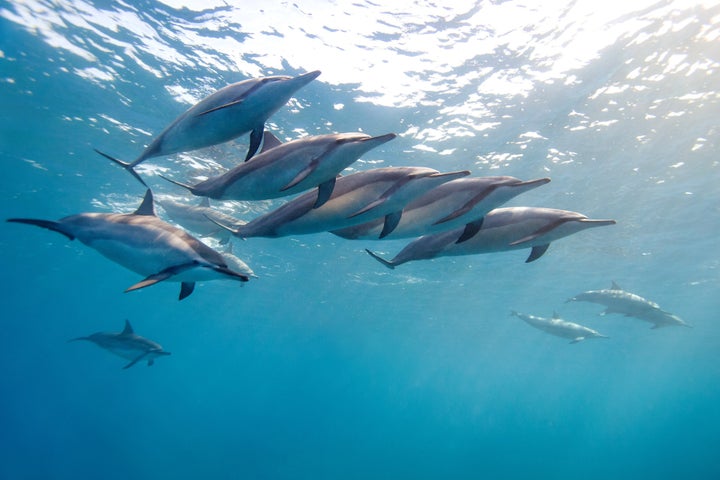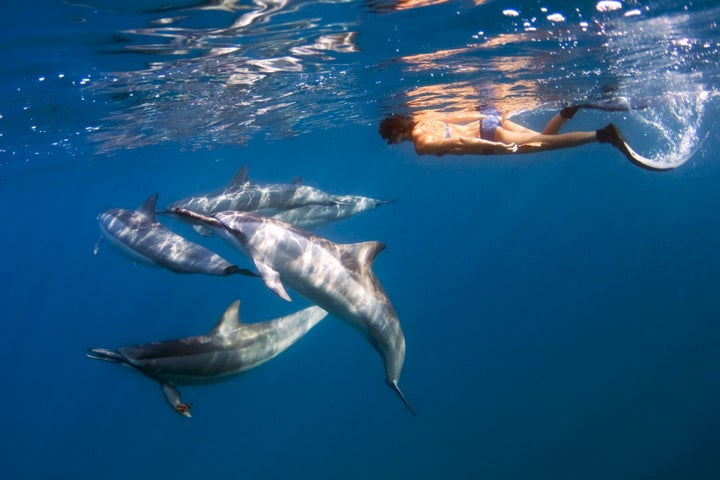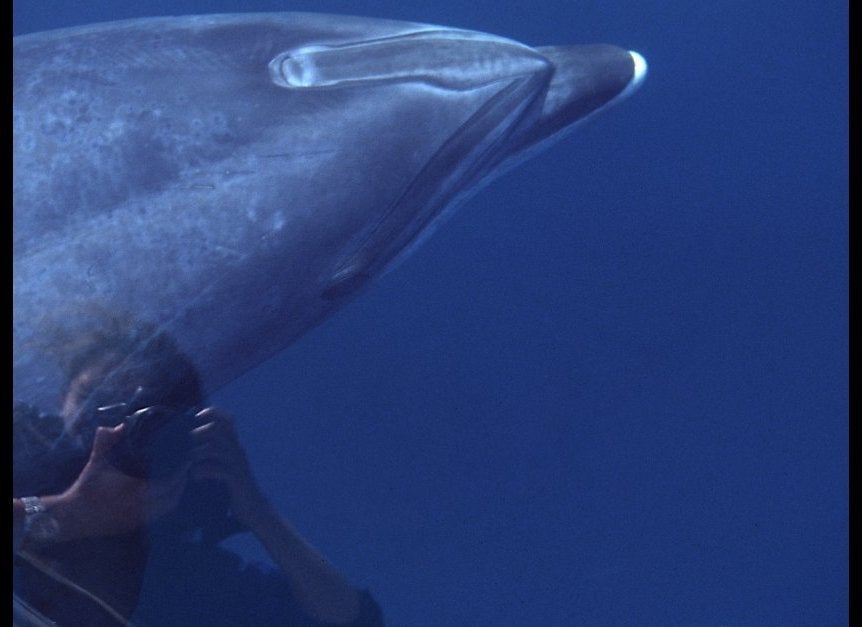Swimming alongside wild dolphins has long been a Hawaii vacation bucket-list item.
While getting up close and personal with Hawaii spinner dolphins might seem innocent, scientists are concerned that increased human interactions may harm the animals by disturbing a critical period of their rest.
"We have seen changes in their behavior," Ann Garrett of NOAA's National Marine Fisheries Service told The Huffington Post. "They'll be more active with people around."
As a result, the service's Pacific Islands Regional Office is advancing a proposed rule change that would, at some level, restrict swimming with the beloved species.

Spinner dolphins are nocturnal. After feeding in deep water at night, the animals return to sheltered, shallow bays to rest during the day. The potential problem arises when swimmers draw them out of their resting state, a change in behavior that NOAA points out "may constitute harassment," which is illegal under the federal Marine Mammal Protection Act.
From 2010 to 2013, for example, spinner dolphins off Hawaii’s Big Island were “chronically and repeatedly exposed to human activities" more than 82 percent of the time, according to research by Julian Tyne, a postdoctoral researcher at Australia's Murdoch University.
Ultimately, NOAA says disturbing the animals in their nearshore habitat could force them to retreat to less favorable locations, putting them at risk of attack by sharks and other predators.
"Disturbing their resting behaviors can actually affect their long-term health and the health of the population," Garrett told The Associated Press.
This summer, more than 10 years after filing an initial notice of its intent to consider regulations, NOAA is set to propose its new rules.
The agency, Garrett said, is "considering a range of options, including restricting swimming, instituting approach regulations (distance restrictions), and time area closures (closing certain bays during certain daytime hours)," as well as any combination of the three.
Today, a small number of Hawaii tour companies voluntarily participate in a NOAA program called Dolphin SMART. Designed to minimize harassment to dolphins, the program encourages commercial tour operators to stay 50 yards away from dolphins and to move away cautiously if the animals show signs of disturbance.

NOAA's new rules, however, would not be voluntary, and could affect more than 200 dolphin-related businesses operating in the state, as well as swimmers and other ocean users, the AP reports.
Garrett told HuffPost that establishing rules would "help level the playing field" by keeping aggressive tour companies from chasing down dolphin pods.
The ultimate goal of the changes, she said, will be to provide additional protections for dolphins while still offering "an opportunity for people to have an enjoyable wildlife experience."
CORRECTION: An earlier version incorrectly cited a scholarly work by Julian Tyne. Tyne's work for his doctoral thesis -- not his work for a study published last year in the Journal of Applied Ecology -- found that spinner dolphins off Hawaii’s Big Island were “chronically and repeatedly exposed to human activities" more than 82 percent of the time.

